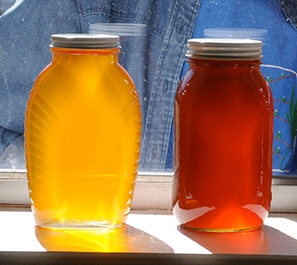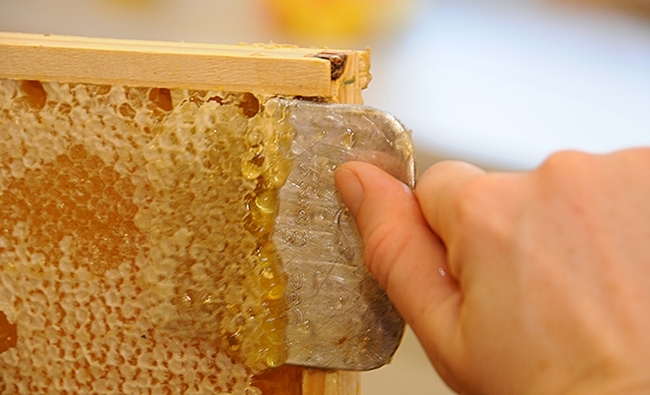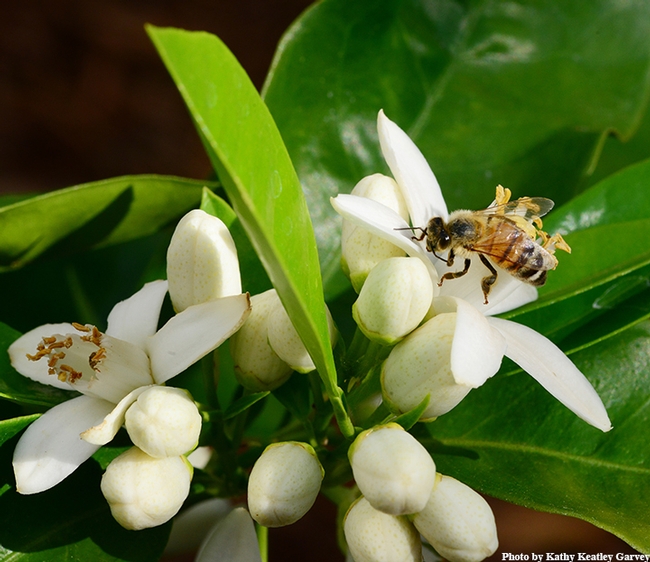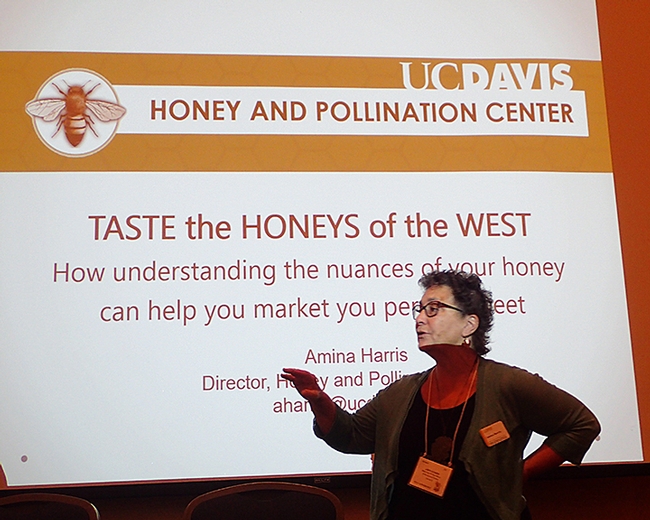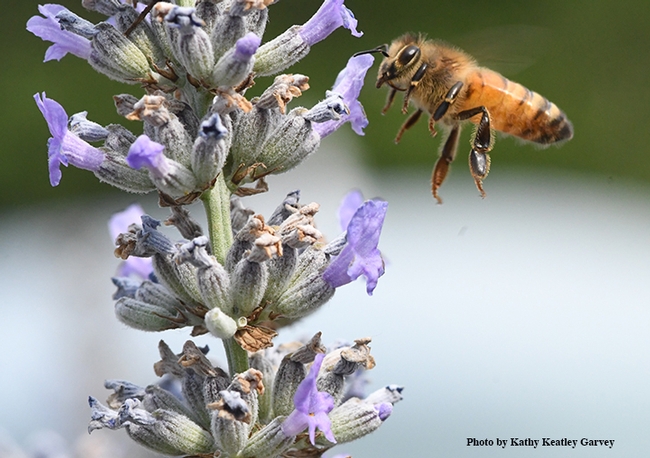A honey of an educational odyssey -- and you're invited
Show me the honey!
You've probably tasted wine in California's acclaimed Wine Country, but have you ever tasted honey in the nation's rapidly growing “Honey Country”—the University of California, Davis?
Now you can.
The UC Davis Honey and Pollination Center is hosting a Honey Sensory Experience next month so you can learn all about honey, taste honey varietals from all over the world, and hear what researchers are doing.
The Honey Sensory Experience is scheduled for Nov. 10-11 in the Robert Mondavi Institute for Wine and Food Science's Sensory Building on Old Davis Road. The course is for beekeepers, bakers, mead makers, honey lovers, packers, importers, professional buyers, honey producers, and "anyone who wants to gain expertise in the aroma of honey analysis," said Amina Harris, director of the UC Davis Honey and Pollination Center, which is closely affiliated with the Robert Mondavi Institute for Wine and Food Science and the UC Davis Department of Entomology and Nematology, part of the UC Agriculture and Natural Resources (UC ANR). "Over two days, expert teachers will guide participants through a unique tasting and educational odyssey."
The event revolves around a first-of-its-kind study in the United States. or the past nine months, the center has been working with a team of sensory experts and trained tasters in the sensory lab in the UC Davis Department of Food Science and Technology. The panel analyzed the flavor, aroma, color, pollen and nutrition of three varietal honeys with samples produced across the nation.
The center's goal is to create a description of each varietal honey's unique characteristics.
“We have about 300 varietal honeys here in the United States,” Harris pointed out. “Many aren't produced each year. And some years actually have a better crop than others. Our center's goal is to help consumers understand what each varietal honey should really taste like.”
Well-known varietals include orange blossom and clover honeys, although these are rarely pure varietals, Harris said.
“According to current honey labeling laws, the varietal listed on the label need only be the predominant floral source. Simply, a blended honey of 23 percent alfalfa, 25 percent wildflower and 25 percent cotton with 27 percent orange blossom can be labeled ‘Orange Blossom Honey.' Swap out the orange blossom for clover and you have a new varietal.”
Harris said the center is "ready to share our experiences. Together we will spend two full days tasting varietal honeys from the world over and investigating the bees' handiwork. It all starts with nectar.”
The Honey and Pollination Center, at the forefront of honey sensory research, developed the first-ever Honey Flavor and Aroma Wheel. The wheel has been featured on National Public Radio, at the Smithsonian, and at tastings and specialty food conferences across the country.
With interest in honey is on the rise, consumers are actively looking for intriguing varietals, said Harris, who has tallied 35 years of experience in the world of varietal honeys. “The Honey Sensory Experience is the perfect opportunity for consumers looking to better-understand how honey is developed—from the moment the honey bee collects the nectar, until the honey is on the supermarket shelf."
"The two-day program “will bring together a group of exceptional presenters to explain all the nuances from nutrition to flavor to cooking."
In addition to Harris, the presenters will include Orietta Gianjorio, member of the Italian Register of Experts in the Sensory Analysis of Honey; Hanne Sivertsen, sensory researcher, UC Davis Department of Food Science and Technology; Amy Myrdal Miller, certified nutritionist and owner of Farmer's Daughter Consulting, Sacramento; Joyce Schlacter, certified quality control specialist and director of food safety and quality, Smitty Honey, Iowa; chef Mani Niall, owner of Sweet Bar Bakery, Oakland, Calif. and Extension apiculturist Elina Lastro Niño, based in the UC Davis Department of Entomology and Nematology.
Niall, known as “Baker to the Stars,” served as a chef to Michael Jackson and a chef for the National Honey Board in the 1990s. He is the author of the book, Covered in Honey: The Amazing Flavors of Varietal Honey.
Miller, a UC Davis graduate, is an “amazing nutritionist,” Harris said. She is a farmer's daughter, a highly regarded public speaker, published author, and founder and president of Farmer's Daughter Consulting, a privately-held agriculture, food, and culinary communications firm.
The Honey and Pollination Center is sponsored by the Robert Mondavi Institute for Wine and Food Science and the UC Davis Department of Entomology and Nematology, part of the UC Agriculture and Natural Resources (UC ANR).
The course, which includes breakfast and lunch each day, is $625. To access the agenda and to register, see http://honey.ucdavis.edu/events/honey-sensory-experience-an-introduction.


